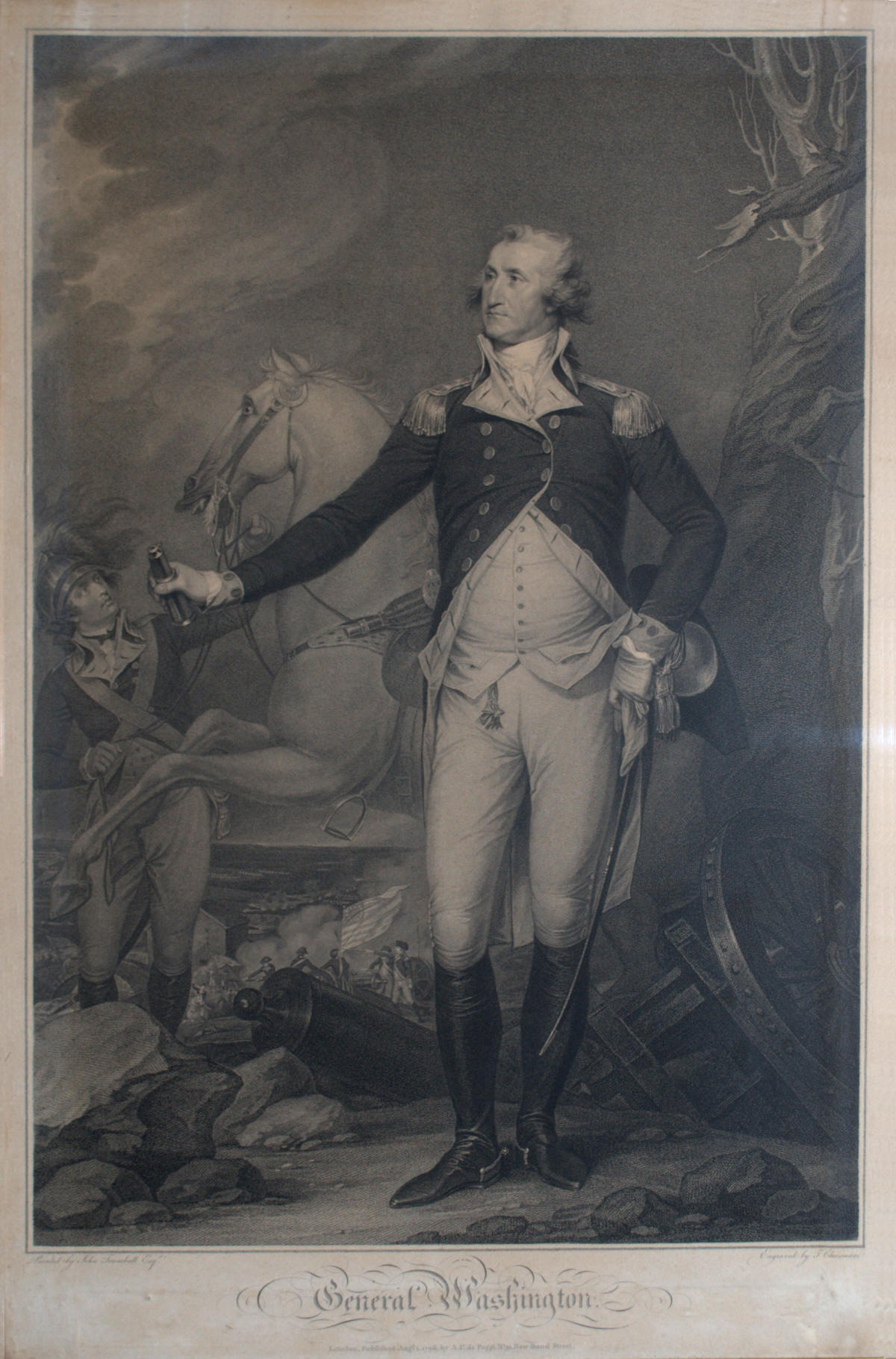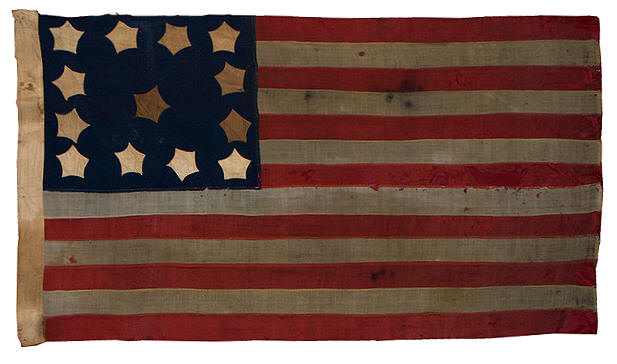
Portraits and
engravings of George Washington made during his lifetime
are scarce, considering that the majority of the images
of his likeness were made in the centuries since his
death in 1799. John Trumbull was one of the most
prolific American artists of the late 18th and early
19th century, and his contemporary paintings of
Washington and other great patriots and patriotic
scenes, such as the Signing of the Declaration of
Independence, are immortalized in American tradition.
During the Revolutionary War, Trumbull actually served
on George Washington's staff in the position of second
personal aide. No other artist who depicted
Washington in the years of his lifetime had such a close
personal experience relationship Washington, especially
during the crucial years of the Revolution, as John
Trumbull. The print here, which was based off of
Trumbull's 1792 oil painting of Washington, was engraved
over the course of several years in the mid 1790's while
Trumbull was accompanying John Jay to England. The
original painting, made for the City of Charleston, was
rejected by the city because of its military nature--the
city was looking for a more presidential rendition of
Washington. But the painting is a masterpiece, as
is the engraving, depicting a Washington who is
supremely confident and almost serene in the heat of
battle.
Trumbull personally
inspected progress on the engraving while its engraver,
Thomas Cheesman, worked on the plate in London.
The very large size of the engraving, coupled with the
extraordinary workmanship seen in the engraving,
including stipple-work on Washington's face that is
nearly photo-realistic, is an incredible accomplishment
for the time. It is one of the most majestic of
any print of Washington from any period. Upon his
return from England, Trumbull presented a copy of the
engraving to Martha Washington as a gift, where it hung
in Washington's home at Mount Vernon and still hangs
today in the main entry to the home.
| An interesting
flag-related footnote to the print is the
presence of two American flags in the painting,
shown in the background where the battle is
taking place, which clearly show a star pattern
of 13 stars in a wreath--the famed Betsy Ross
pattern. While the legend associating
Betsy Ross to this pattern was likely contrived
around the time of the American Centennial in
1876, the presence of this pattern in this
engraving is one of the earliest representations
of this style of flag that I'm aware of.
The fact that this engraving was produced by
Trumbull, who was fanatical in his attention to
detail in his paintings, who was an eye witness
to the war itself as a personal aide to
Washington, and that the engraving actually hung
in Washington's home during his lifetime, is
extraordinary. I am doubtful that Trumbull
represent an American flag in a style that
didn't exist on the battlefield, and present the
image to his own Commander in Chief as a gift. |

A Rare 13 Star
Flag in the Trumbull Pattern
(IAS-00225) |
|
Thus the presence of flags in this style in the
engraving is one of the strongest pieces of
evidence that flags in the Betsy Ross pattern
were produced and used during the Revolution.
Another pattern for the 13 star flag which does
appear in several of Trumbull's patterns is a
square of 12 stars with one central star.
This pattern, which has become known as the
Trumbull Pattern named after John Trumbull, is
extremely rare, with only a handful of antique
American flags of the type surviving today.
Of those that do survive, only one,
IAS-00225, is potentially an 18th century
flag based on the manner of its construction and
its materials. |
|

